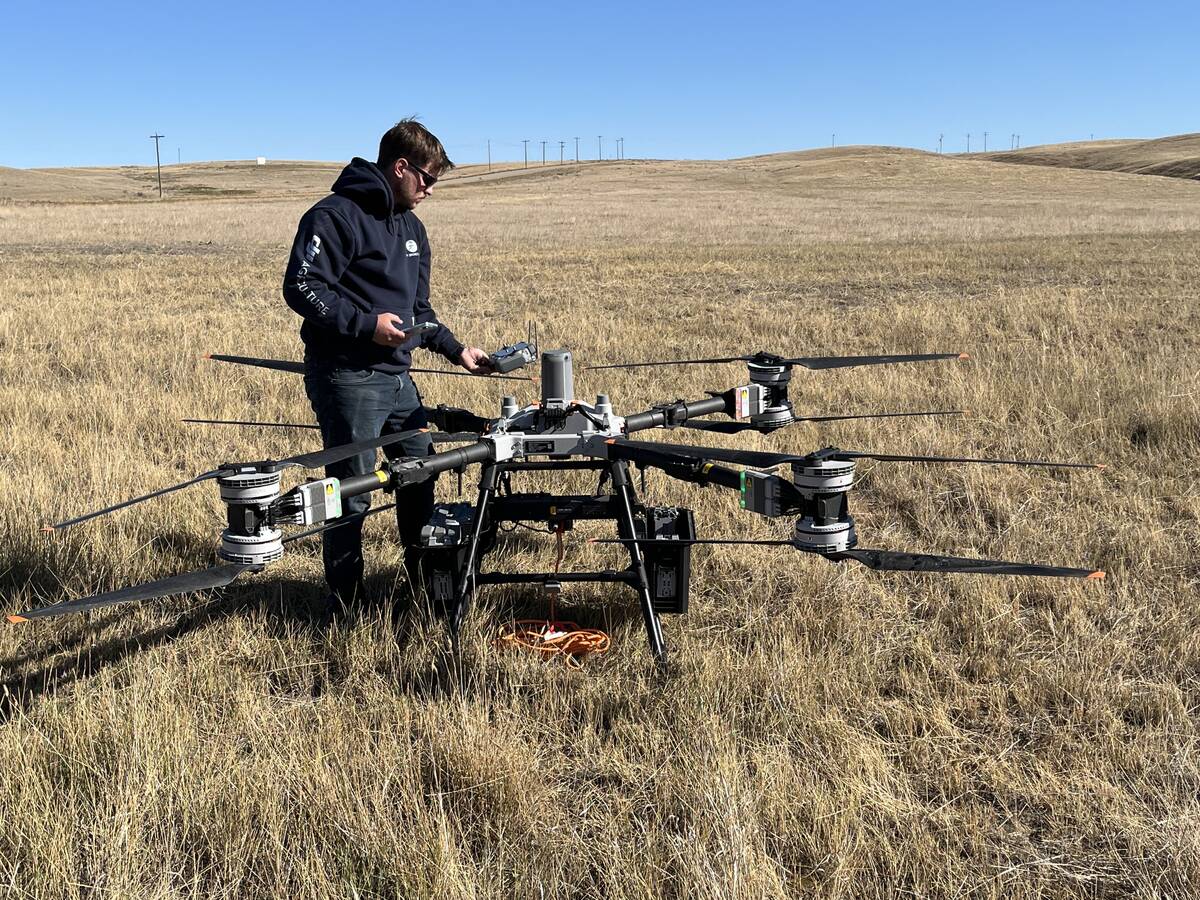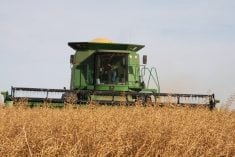A new study claims that irrigation agriculture is increasingly vital to Alberta’s economy, and irrigation farmers are key contributors. “The Economic Value of Irrigation in Alberta,” a study commissioned by the Alberta Irrigation Projects Association (AIPA) and funded through Growing Forward 2, claims that combined annual sales of irrigation crop and livestock products generated about $1.7 billion to the Alberta GDP annually and associated food processing another $1.7 billion.
In addition, the study claims that sales of irrigation crop and livestock products on 4.7 per cent of Alberta’s cultivated land base generated 19 per cent of the province’s total primary agricultural sales, seven times that of dryland production.
Read Also

Farm-facing drone does the heavy lifting
Canadian distributor DJI Agriculture unveils its AGRAS T100 drone to western Canada’s producers for greater efficiencies in spraying and granular spreading in fields.
The study comes at a critical moment. This August, the Alberta government declared a province-wide agricultural disaster as a result of extreme weather. The Alberta Crown Corporation has paid out more than $240 million in crop insurance claims, with that figure expected to increase into the fall.
According to Ron McMullin, executive director of AIPA, the study was commissioned in 2013 in a bid to strengthen support for the province’s irrigation industry and justify provincial funds used for irrigation. Alberta’s irrigation industry is funded through a cost-sharing program whereby the province contributes 75 per cent to the irrigation rehabilitation program, with district (or farmer) funds supplying the remaining 25 per cent. This fiscal year, the total amount is $19 million.
Moneys are used for maintenance and rehabilitation of existing infrastructure, as well as implementation of efficiency measures. “The result is that we have much more efficient water use. We don’t divert as much but we irrigate more land. So it’s vital for us to maintain that funding,” says McMullin.
The study, which was commissioned in 2013, analyzed 11 years of data from 2000 to 2011 within Alberta’s 13 irrigation districts, as well as private irrigation projects in the province.
The study analyzed the economic effects of irrigated production, including backward and forward linkages related to that production. “When you convert all of that value, irrigation agriculture generates about $2,500 per acre per year,” says McMullin. “Each acre in an irrigated region is stimulating the economy to that degree. When you look at what the farmer puts in their pocket it is 10 per cent of that. The rest goes into the community and the province.”
Drought years will increase
Dr. Suren Kulshreshtha, professor in the department of bioresource policy, business and economics at the University of Saskatchewan, and a co-author of the report, says studies are showing that over the next 100 years Alberta will see periods of heavy precipitation interspersed with periods of extended drought.
“The future will provide opportunities and challenges for Alberta’s irrigation industry. Increased frequency, duration, and intensity of droughts may occur as a result of climate change,” the study concludes. “Longterm water and drought management strategies will allow irrigation districts to better optimize water supply and irrigation production during prolonged droughts.”
Kulshreshtha says a key question is how to allocate water each year without compromising water availability over the coming years. “How do you allocate water for the year without concern for the next year’s conditions — what might be happening in future years — so we don’t suffer under drought conditions?”
According to Kulshreshtha, the solution involves increasing existing capacity through efficiency measures, and potentially adding capacity with additional reservoirs. “For drought planning (a new reservoir) would be very desirable,” he says. “Fighting a one- or two-year drought is doable with the existing irrigation system, but some of the irrigation systems couldn’t manage a three-year drought,” he says.
McMullin says storage is complex in Alberta and the possibility of a new reservoir should be kept on the table. But he says more investment is needed in existing irrigation rehabilitation. “We would like to see the dollar value of that irrigation rehab go up — it was 24 million for many years, with one year of 31 or 32 million. Now it is at 19 million. If that figure were increased we could be even more efficient.”
There is room for investment in irrigation agriculture in other areas. Private investment in genetics makes a major difference in building the province’s economy, he says. “Food processing is a significant part of the value of irrigation. Are there other food processors who can come into the area to provide jobs and expand the industry?
“Because of our irrigation technology and growers, we have a high quality product that makes a high quality processing product.”
Kulshreshtha emphasizes that Alberta’s irrigating producers are making a major difference to Alberta’s economy and should be celebrated. “They should be proud of being irrigators,” he says. “They’re in a better situation to fight climate change than dryland farmers. And they are providing diversification in agriculture, which is not possible in dryland. Irrigated agriculture is contributing much more than people realize.”
















